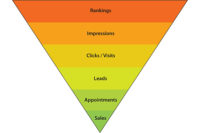Infrared (IR) thermometers operate on the principle that all objects naturally emit invisible IR energy.
IR thermometers measure the surface temperature of objects without touching them, by measuring the IR energy emitted from the target in the 07 to 14 region of the electromagnetic spectrum.
As energy passes through the atmosphere, IR thermometers capture the energy, pass it through the optical system of the instrument, and convert it to an electrical signal at the detector. The signal is then displayed and/or converted to a standard output on the LCD.
Because the instruments measure temperature without contact, they’re often used in applications in which the object being measured could be damaged by contact, is moving, or is inaccessible.
Right thermometer for the job
Portable IR thermometers are lightweight, rugged, and easy to use. As maintenance tools, they help spot potential problems that can lead to costly repairs and downtime. Maintenance, troubleshooting, energy audits, installation, quality control, utility applications, and hvac monitoring are all viable uses for noncontact temperature measurement.When selecting an instrument for an application, consider temperature range, distance- to-spot size ratio (D:S), features, and cost.
- Temperature range — Select an instrument with a temperature range that most closely matches your application range. There are instruments that measure temperatures as low as -25°F for subzero applications, while others measure temperatures as high as 5,400° for specialized applications involving metals and glass.
-
D:S — All IR thermometers have optical resolutions expressed as a distance-to-spot size ratio. The D:S is determined by dividing the distance from the object to the thermometer by the size of the spot being measured.
When choosing an instrument, determine which one is right for your application based on how far the instruments will be from the target and the size of the target.
For example, there are instruments that measure a spot size of 1 in. dia at a distance of 6 in. Still others measure a 1-ft spot size at a distance of 60 ft.
- Features — A variety of models are available with features such as laser sighting for accuracy in aiming; maximum, minimum, differential, and average temperature calculations; audible high-low alarms; built-in datalogging capabilities that produce custom graphs and tables; and adjustable emissivity to compensate for reflective surfaces.
- Cost — A basic model IR thermometer can be purchased for as little $99 and an enhanced model can sell for as much as $2,000, depending on the unit’s temperature range, D:S, and other features.
This article was submitted by Raytek Corp., whose Portable Products Division offers a series of non-contact IR thermometers for the hvacr, automobile, food safety, and industrial-electrical industries. For more information, contact the company at 831-458-1175.

